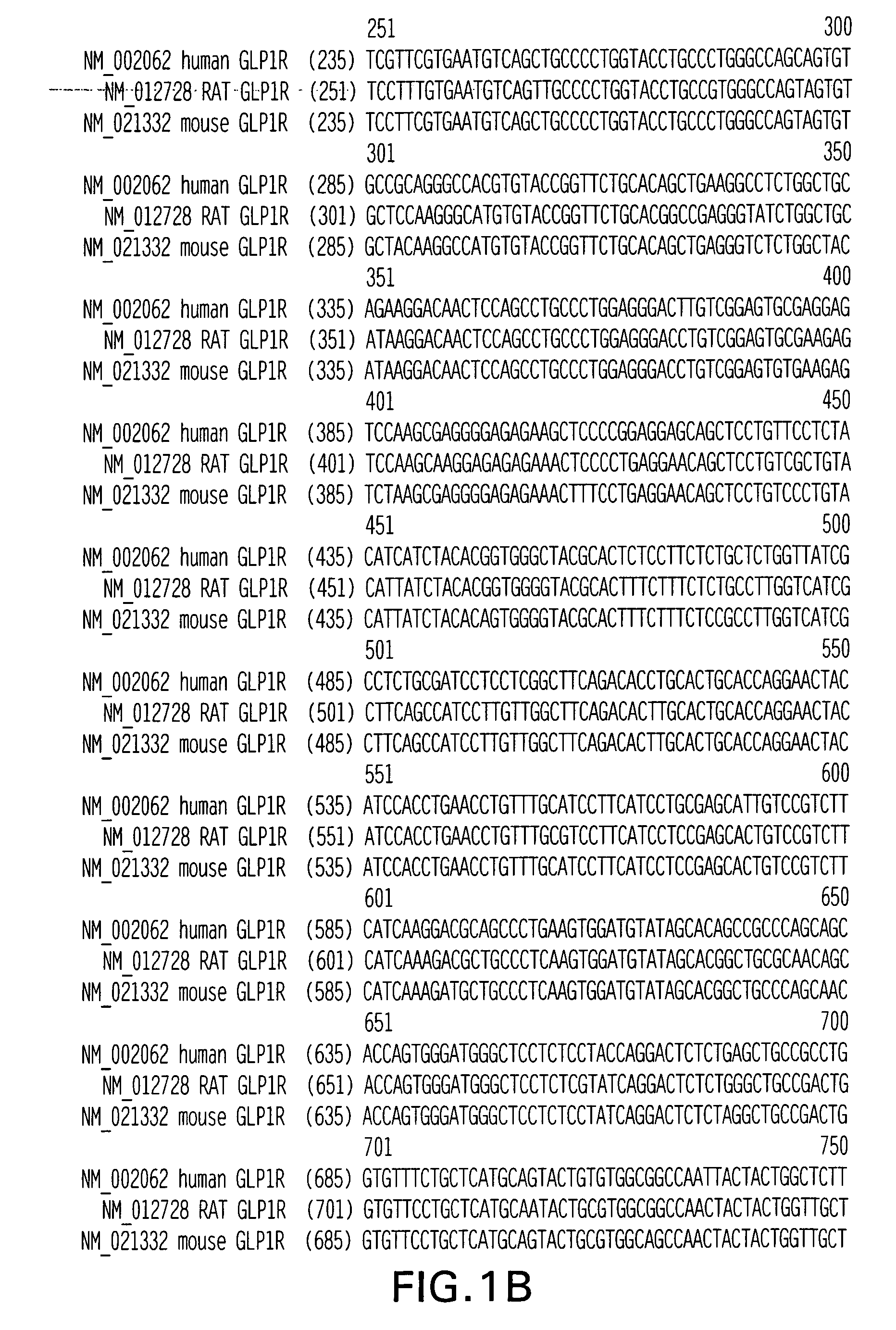GLP-1 receptor agonist and allosteric modulator monoclonal antibodies and uses thereof
a technology of allosteric modulator and glp-1 receptor, which is applied in the field of monoclonal antibodies, can solve the problems of short pharmacokinetic half-life of native incretin, no reported success in identifying a small molecule agonist of this receptor, hypoglycemic shock and other dangerous complications, etc., to improve glycemic control, suppress glucagon release, and induce insulin secretion
- Summary
- Abstract
- Description
- Claims
- Application Information
AI Technical Summary
Benefits of technology
Problems solved by technology
Method used
Image
Examples
example 1
Humanized Mouse / In Vitro Screening
[0164] Abgenix (Fremont, Calif.) humanized mice are immunized against KLH-coupled peptides that mimic the three extracellular loops of the human GLP-1 receptor. A subset of these mice will be immunized against the peptides and the soluble extracellular amino-terminal domain of the GLP-1 receptor.
[0165] Peptides are synthesized on an ABI peptides synthesizer according to manufacturer's instructions.
ReceptorExtracel-Peptidelular#DomainPeptide Sequence1EC1AALKWMYSTAAQQHQWDGLLSYQDSLS CRE(SEQ ID NO: 7)2EC2CYEDEGCWTRNSNMNE(SEQ ID NO: 8)3EC3CDEHARGTLRFIKLPTEE(SEQ ID NO: 9)
HPLC purified peptides are lyophilized and quantitated using both spectrophotometry and bicinchoninic acid (BCA) assay kits (Pierce Chemical Company, Rockford, Ill., Catalog No. 23227) after resuspension in phosphate buffered saline (Invitrogen Corporation, Carlsbad, Calif., Catalog No. 14040-117).
KLH-Conjugation of Peptides
[0166] Each peptide is conjugated to KLH using t...
example 2
Phage Display / Selection by Internalization or Binding / In Vitro Screening
[0181] Phage display technology (Sidhu (2000) Current Opinions in Biotechnology 11:610-616) is a very powerful technique developed to combine molecular diversity and reiterative selection strategies into one potent tool used in drug discovery. Phage antibody repertoires can be made larger and more diverse than is possible in an intact organism. In this technique, human antibodies are expressed as fusions with phage coat proteins of filamentous phage. Each infectious phage displays one or two antibody molecules on its surface. Entire libraries of these phage are then challenged with a “target” protein or hapten. Antibodies having high affinities with these targets bind and are retained during the washing phase of the selection protocol. High-affinity antibody displaying phage are then eluted off the target and amplified by growing in a host E. coli strain. Millions of new phage with the selected binding affiniti...
example 3
Converting an Inert Antibody to an Agonist Antibody by Conjugation
[0186] It is possible to convert an inert antibody into an agonist antibody by recombinant or chemical conjugation. An inert antibody is one that does not demonstrate agonist or antagonist activity against the human GLP-1 receptor. By using commonly available covalent coupling agents, it is possible to convert an inert antibody to an agonist antibody by conjugating agonist peptides to the antibody. This conjugation is effected in a manner that does not inactivate the agonist peptide's activity and yet allows the peptide to escape renal clearance. The agonist peptides can display synthetically modified non-naturally occurring amino acids that make them resistant to DPP IV degradation. A suitable chemical linker can be employed to couple the peptide to the antibody by attachment to functional groups on the surface of the antibody.
PUM
| Property | Measurement | Unit |
|---|---|---|
| incubation time | aaaaa | aaaaa |
| wavelength | aaaaa | aaaaa |
| absorbance | aaaaa | aaaaa |
Abstract
Description
Claims
Application Information
 Login to View More
Login to View More - R&D
- Intellectual Property
- Life Sciences
- Materials
- Tech Scout
- Unparalleled Data Quality
- Higher Quality Content
- 60% Fewer Hallucinations
Browse by: Latest US Patents, China's latest patents, Technical Efficacy Thesaurus, Application Domain, Technology Topic, Popular Technical Reports.
© 2025 PatSnap. All rights reserved.Legal|Privacy policy|Modern Slavery Act Transparency Statement|Sitemap|About US| Contact US: help@patsnap.com



